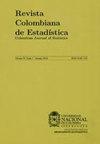监测随时间变化的样本量过程的聚合泊松数据
Q3 Mathematics
引用次数: 5
摘要
本文讨论在监测具有不同样本量的泊松过程时数据聚合的影响。这些聚合过程在许多应用程序中是必要的或方便的,并且可以简化监视过程。在健康监测应用中,通常的做法是汇总某一时间段内的观察结果,并在该时间段结束时监测过程。此外,在这种类型的应用中,随时间变化的样本量是很常见的,这使得不是监测过程的平均值,就像在恒定样本量的泊松观察中一样,而是监测不良事件的发生率。Shen et al.(2013)和Dong et al.(2008)提出了两种用于监测随时间变化样本量的计数泊松数据的控制图。我们使用平均运行长度(ARL)来比较这些控制图在考虑不同聚集水平、生成样本量和不同失控状态两种情况下的性能。模拟研究表明,在某些情况下,以及在适当使用数据聚合而不会显著影响及时发现失控信号的情况下,数据聚合的效果。我们还通过一个在健康监测中的应用实例说明了数据聚合的效果。本文章由计算机程序翻译,如有差异,请以英文原文为准。
Monitoring Aggregated Poisson Data for Processes with Time-Varying Sample Sizes
This article deals with the effect of data aggregation, when Poisson processes with varying sample sizes, are monitored. These aggregation procedures are necessary or convenient in many applications, and can simplify monitoring processes. In health surveillance applications it is a common practice to aggregate the observations during a certain time period and monitor the processes at the end of it. Also, in this type of applications it is very frequent that the sample size vary over time, which makes that instead of monitor the mean of the processes, as would be in the case of Poisson observations with constant sample size, the occurrence rate of an adverse event is monitored. Two control charts for monitoring the count Poisson data with time-varying sample sizes are proposed by Shen et al. (2013) and Dong et al. (2008). We use the average run length (ARL) to compare the performance of these control charts when different levels of aggregation, two scenarios of generating of sample size and different out-of-control states are considered. Simulation studies show the effect of data aggregation in some situations, as well as those in which their use may be appropriate without significantly compromising the prompt detection of out-of-control signals. We also show the effect of data aggregation with an example of application in health surveillance.
求助全文
通过发布文献求助,成功后即可免费获取论文全文。
去求助
来源期刊

Revista Colombiana De Estadistica
STATISTICS & PROBABILITY-
CiteScore
1.20
自引率
0.00%
发文量
0
审稿时长
>12 weeks
期刊介绍:
The Colombian Journal of Statistics publishes original articles of theoretical, methodological and educational kind in any branch of Statistics. Purely theoretical papers should include illustration of the techniques presented with real data or at least simulation experiments in order to verify the usefulness of the contents presented. Informative articles of high quality methodologies or statistical techniques applied in different fields of knowledge are also considered. Only articles in English language are considered for publication.
The Editorial Committee assumes that the works submitted for evaluation
have not been previously published and are not being given simultaneously for publication elsewhere, and will not be without prior consent of the Committee, unless, as a result of the assessment, decides not publish in the journal. It is further assumed that when the authors deliver a document for publication in the Colombian Journal of Statistics, they know the above conditions and agree with them.
 求助内容:
求助内容: 应助结果提醒方式:
应助结果提醒方式:


